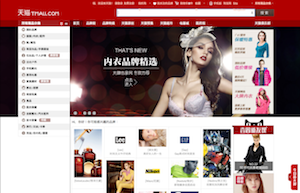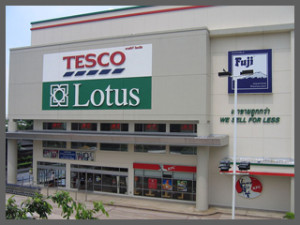Shopper marketing has been growing in importance in Europe and the US for some time, but how widely adopted is the discipline in Asia? A recent survey of Asian managers conducted by Nielsen and engage reveals that most managers predict shopper marketing will become more important for the companies they work for in Asia. More than half of the managers surveyed said their companies had begun making shopper marketing a priority in the last 5 years.
So why is this happening in Asia now? Read my thoughts on the growing importance of shopper marketing in Asia over on the engage blog.
 Over the last few weeks, I’ve been asked a number of times about the differences between trade marketing and
Over the last few weeks, I’ve been asked a number of times about the differences between trade marketing and  China’s huge online market shows the potential for shoppers in emerging markets to leapfrog traditional retail environments and jump straight in to online shopping. Why wait for your favorite brand to open a store near you, or for your uncle to travel to the States when you can get the product via your mobile?
China’s huge online market shows the potential for shoppers in emerging markets to leapfrog traditional retail environments and jump straight in to online shopping. Why wait for your favorite brand to open a store near you, or for your uncle to travel to the States when you can get the product via your mobile? It’s November! With less than two months of the year to go, Tesco’s suppliers around the world will be preparing the ground for agreeing next year’s Joint Business Plan. This year the Thailand business unit, Tesco Lotus has launched a new twist to the process, encouraging and leading manufacturers to pool their ideas. Clearly Tesco’s Thai managers hope that by gathering a category’s leading lights, they will be able to access a level of insights they have failed to tap to date. Whilst this is great for Tesco’s commercial team, many Thai trade marketers are burning the midnight oil to meet expectations!
It’s November! With less than two months of the year to go, Tesco’s suppliers around the world will be preparing the ground for agreeing next year’s Joint Business Plan. This year the Thailand business unit, Tesco Lotus has launched a new twist to the process, encouraging and leading manufacturers to pool their ideas. Clearly Tesco’s Thai managers hope that by gathering a category’s leading lights, they will be able to access a level of insights they have failed to tap to date. Whilst this is great for Tesco’s commercial team, many Thai trade marketers are burning the midnight oil to meet expectations! I’ve been spending a lot of time in grocery stores recently. Over the last six months I’ve visited supermarkets and hypermarkets in two continents and in seven different countries. You’d think that in such a diverse world, with so many cultural differences, that our grocery stores would reflect our diversity and differences, wouldn’t you?
I’ve been spending a lot of time in grocery stores recently. Over the last six months I’ve visited supermarkets and hypermarkets in two continents and in seven different countries. You’d think that in such a diverse world, with so many cultural differences, that our grocery stores would reflect our diversity and differences, wouldn’t you?